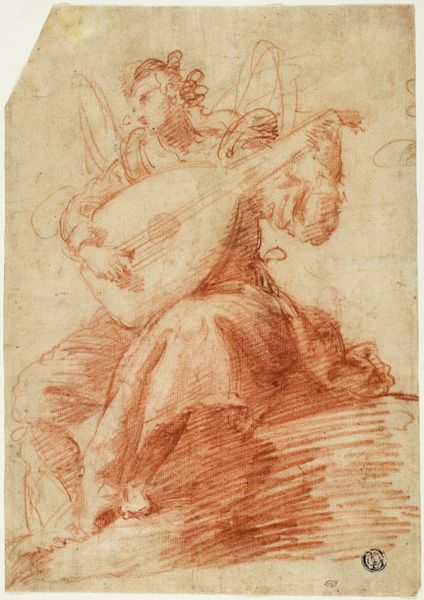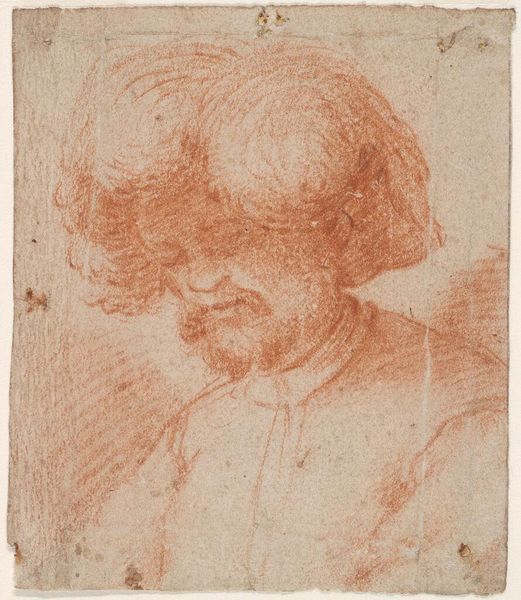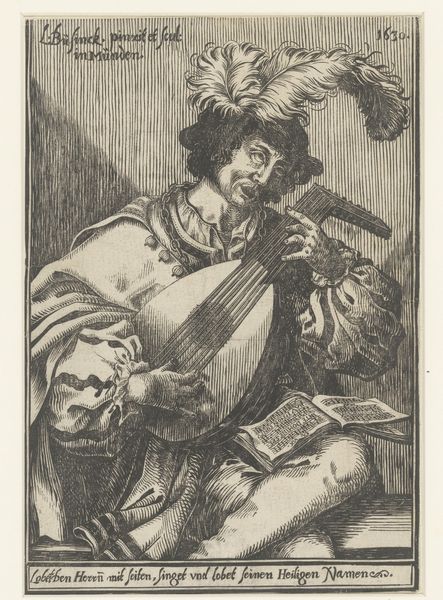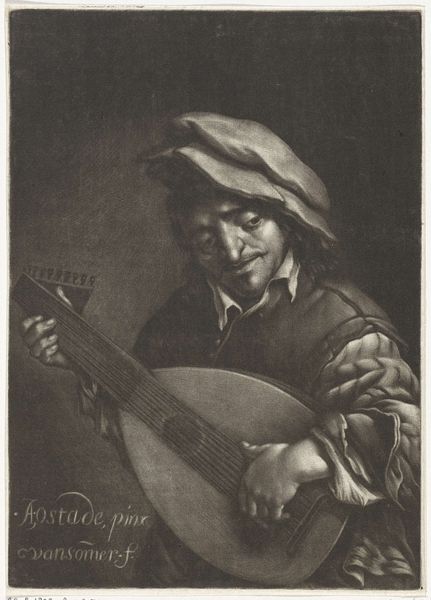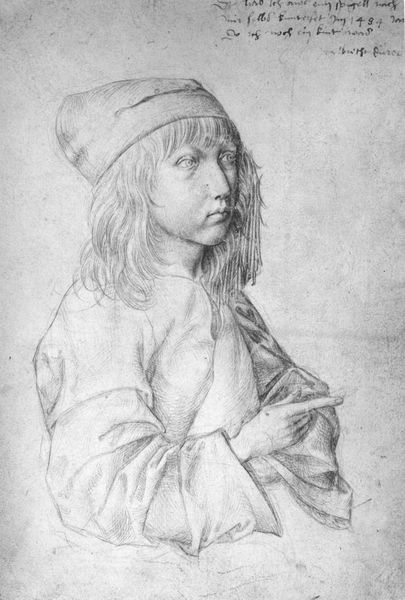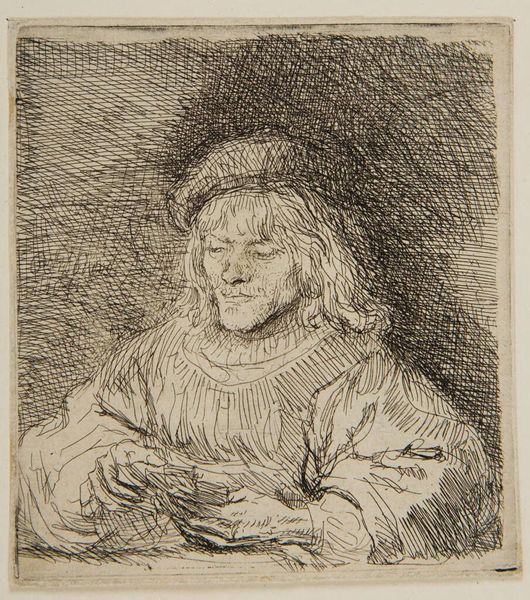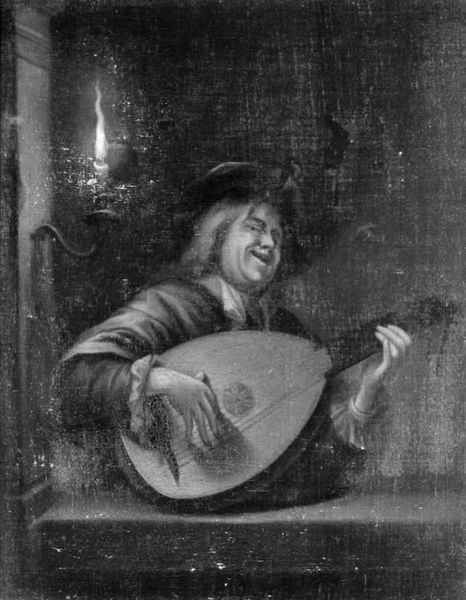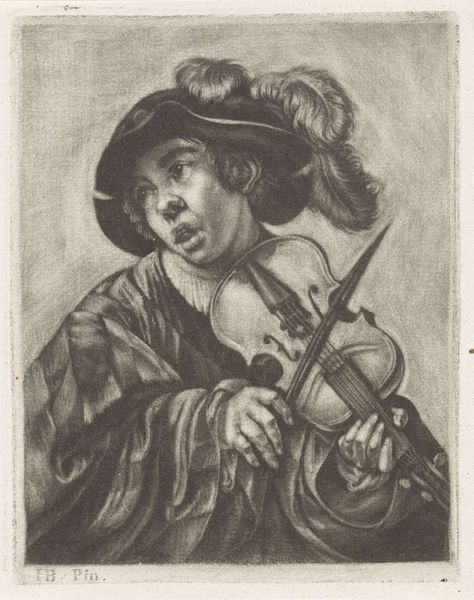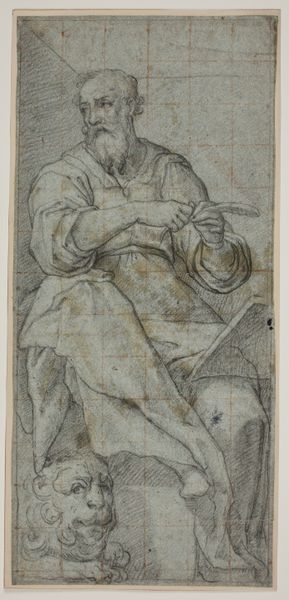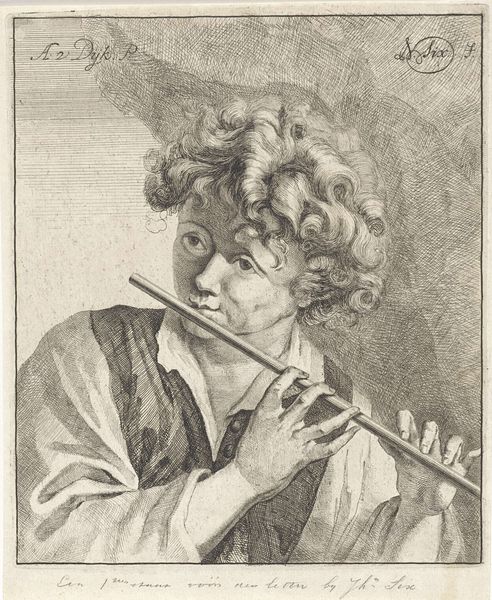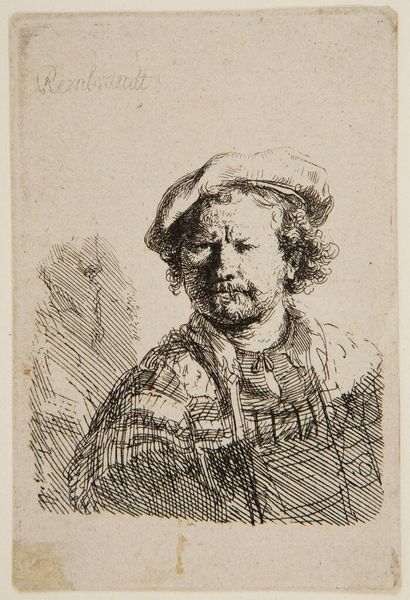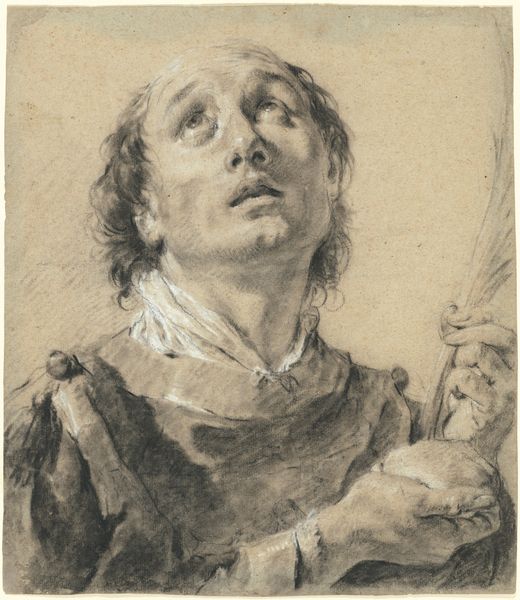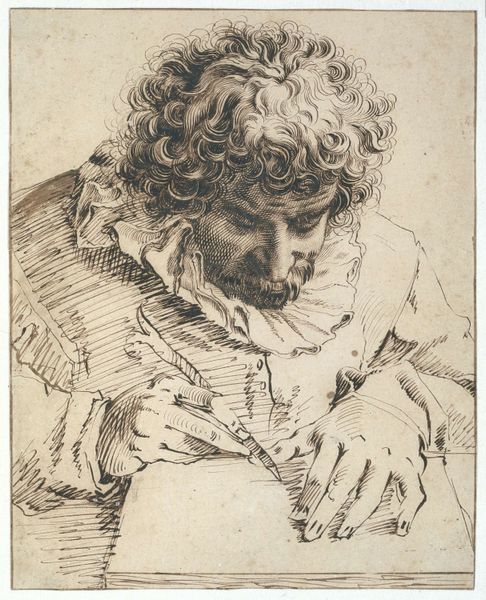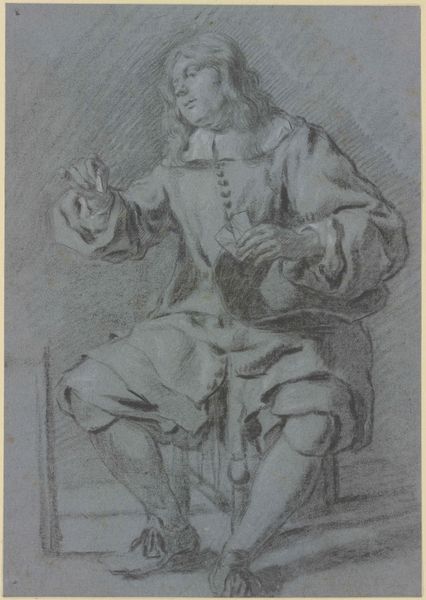
drawing, paper, charcoal
#
portrait
#
drawing
#
baroque
#
charcoal drawing
#
paper
#
pencil drawing
#
portrait drawing
#
genre-painting
#
charcoal
Copyright: Public domain
Curator: This engaging drawing is titled "The Lute Player, After Frans Hals," created by David Bailly in 1624 using charcoal on paper. What catches your eye? Editor: Immediately, it’s the dynamism, wouldn’t you say? The almost upward surge of the composition, mirroring the character's delighted expression. Curator: Precisely! It is thought to capture a buoyant spirit reminiscent of the Dutch Golden Age, reflecting music as a form of social communion, celebration, or even gentle ribaldry. Bailly positions this figure in direct relationship to that cultural landscape. Editor: It's fascinating how the texture is created through cross-hatching. The fine lines describing the fabrics—you can almost feel the folds—offset the broad, softer planes of the face and instrument. Curator: Note, too, the direction of the gaze, tilted ever so slightly upward. It suggests a connection beyond the picture plane, perhaps engaging the viewer or another musician. The lute itself symbolizes harmony, concord, but it can also represent transient earthly pleasures. Editor: It seems that the visible date functions not merely as a marker of the artwork’s completion, but as a subtle indication of human temporality—the player, his song, and the drawing itself exist only within the boundaries of time. There is even something a little death-obsessed. Curator: Well, the Dutch certainly were keen on "memento mori," so a gentle reminder of life's fleeting nature is definitely plausible, although not, perhaps, overtly so here. Perhaps, instead, it references artistic legacy? A ‘vanitas’ beyond just the earthly realm? Editor: Interesting thought. The way the light defines form here is what gives the piece its exuberance; this direct illumination and tight cropping are essential to its Baroque vitality. It emphasizes the here and now. Curator: Bailly's rendering speaks to an appreciation of everyday life. The charcoal medium contributes to the piece’s raw, immediate emotional honesty and vulnerability. Editor: Looking closely at "The Lute Player," it is impossible to not feel enlivened. Bailly used some incredible techniques! Curator: Agreed, indeed! The cultural importance of musical tradition at this period cannot be overlooked, and how Bailly channels that legacy into a drawing, after Hals, continues to charm, so many years later!
Comments
No comments
Be the first to comment and join the conversation on the ultimate creative platform.
